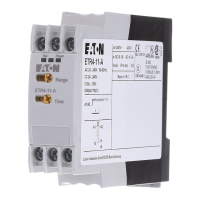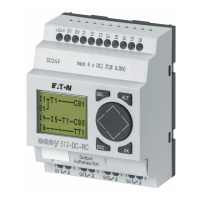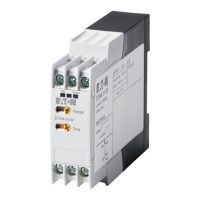Inconsistency Token (Question Mark)
Operational
Info
Ack/Rst
Ok
CTRL
Assignment 1
50P[1] . Active
⁕
?
Latched Inactive
Ack signal - . -
LED Active Color Red
LED Inactive Color -
Assignment 1 50P[1] . Active
Inverting 1 Inactive
Assignment 2 - . -
Inverting 2 Inactive
Assignment 3 - . -
Inverting 3 Inactive
Assignment 4 - . -
Inverting 4 Inactive
Assignment 5 - . -
Inverting 5 Inactive
Name Value
Device Para/LEDs/LEDs group A/LED 1]
The question mark token, either in the
heading of the display or as a bold red sign
within the PowerPort-E dialog, indicates that
a validity or consistency problem has been
detected.
If PowerPort-E is used for saving the settings
as a le then an additional warning dialog is
shown in case of inconsistent settings.
Moreover, the protection device refuses to
accept and activate the setting values.
An example for such a consistency problem can
be as follows: It is possible to set one of the
LEDs (for example, for a device with 14 LEDs,
the rst LED in Group A) such that it is lit if a
particular protection function (I[1], for example)
is active. This is achieved by the following
setting:
[Device Para / LEDs / LEDs group A / LED
1] »Assignment 1« = “I[1] . Active”.
In principle, there is nothing wrong with this
setting; it is the same setting that is also
shown above, as an example for the asterisk
token. But if it happens that the assigned
protection function is intentionally disabled
(setting [Device Planning] »Mode« = “-”) then
this is an obvious consistency problem, and the
LED assignment is not accepted.
53www.eaton.comE-Series Family Quick Start Guide
3 Quick Start – Operation via Panel
3.11 Assisting Tokens

